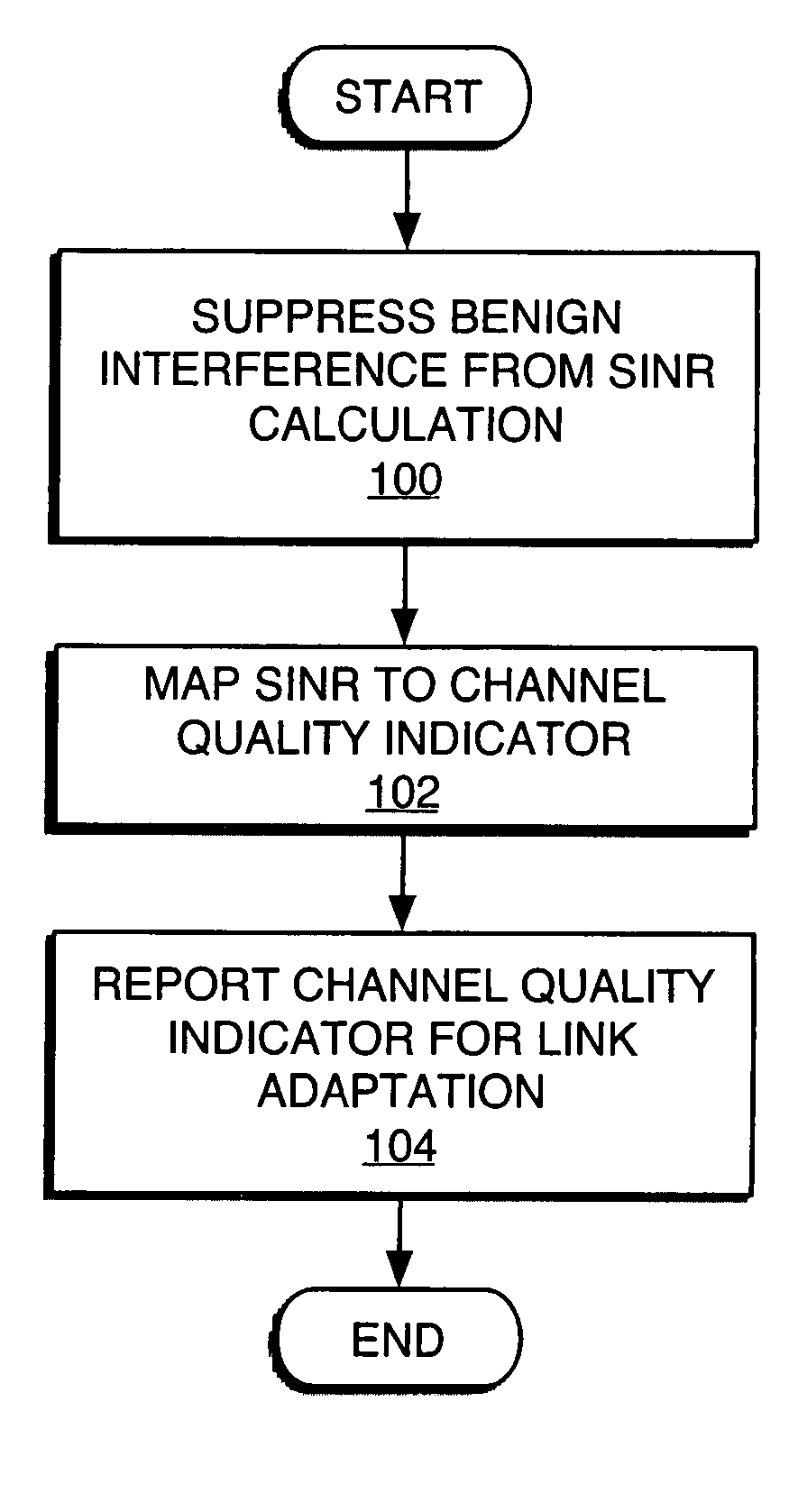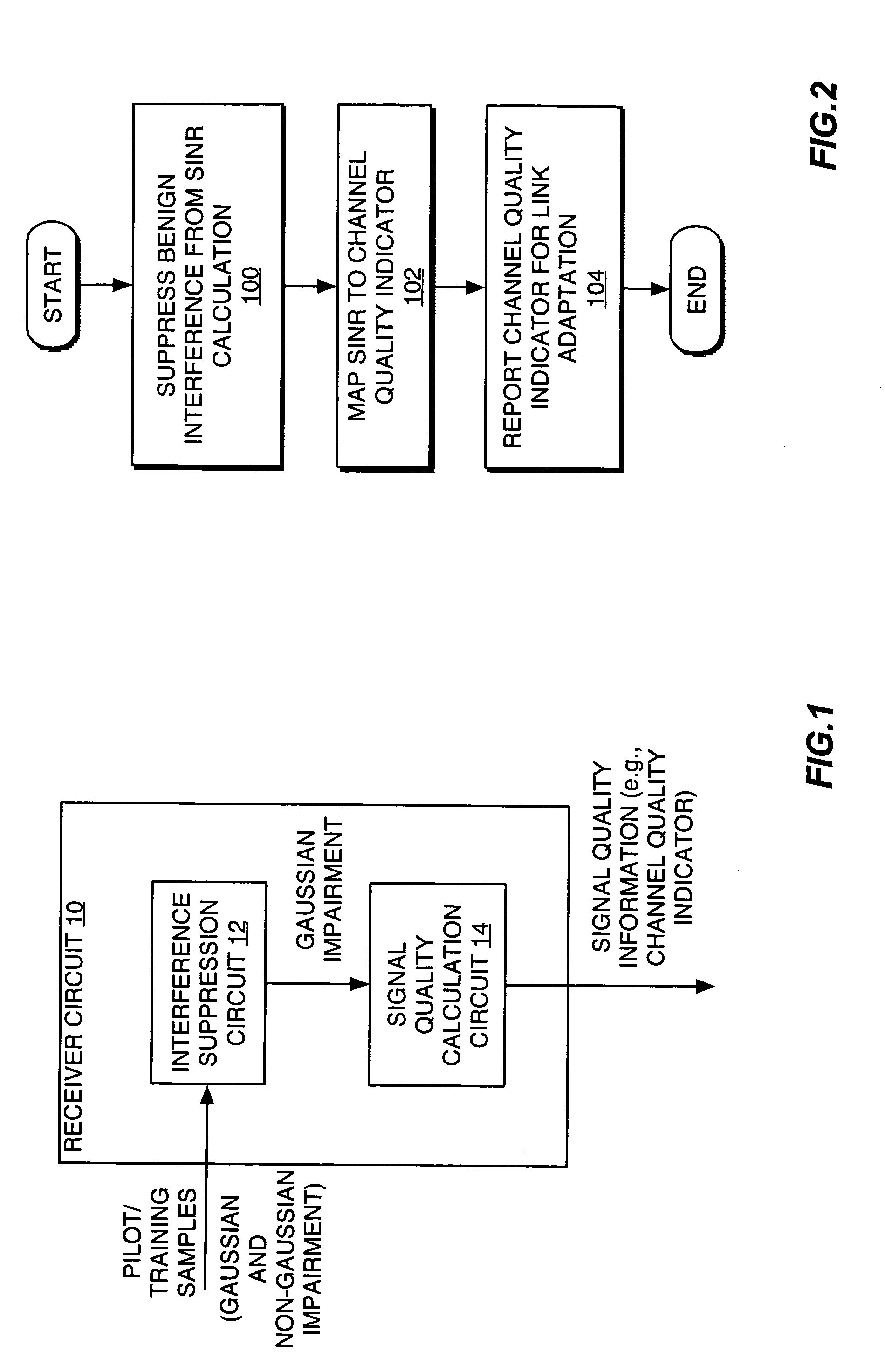Benign interference suppression for received signal quality estimation
a technology of receiving signal and interference suppression, applied in the field of receiving signal quality estimation, can solve the problems of low data error rate, high block error rate, and under-reporting of channel quality, and achieve the effect of improving signal quality estimation
- Summary
- Abstract
- Description
- Claims
- Application Information
AI Technical Summary
Benefits of technology
Problems solved by technology
Method used
Image
Examples
Embodiment Construction
[0022] Although exemplary embodiments of the present invention are described in the context of CDMA-based wireless communication networks, such as WCDMA and cdma2000, it should be understood that the present invention applies to a wide variety of communication systems and receiver types. In broad terms, the present invention recognizes that overall interference measurements at a wireless receiver may include different types of interference, and that some types of interference are less “harmful” to signal demodulation than others. By basing received signal quality estimates on interference estimates wherein the contribution of the less harmful interference is suppressed from the calculation, a receiver according to the present invention provides a signal quality estimate that represents a truer picture of its reception conditions. That truer picture may be used to control the radio link more efficiently.
[0023] For example, according to the High Speed Downlink Packet Access (HSDPA) m...
PUM
 Login to View More
Login to View More Abstract
Description
Claims
Application Information
 Login to View More
Login to View More - R&D
- Intellectual Property
- Life Sciences
- Materials
- Tech Scout
- Unparalleled Data Quality
- Higher Quality Content
- 60% Fewer Hallucinations
Browse by: Latest US Patents, China's latest patents, Technical Efficacy Thesaurus, Application Domain, Technology Topic, Popular Technical Reports.
© 2025 PatSnap. All rights reserved.Legal|Privacy policy|Modern Slavery Act Transparency Statement|Sitemap|About US| Contact US: help@patsnap.com



